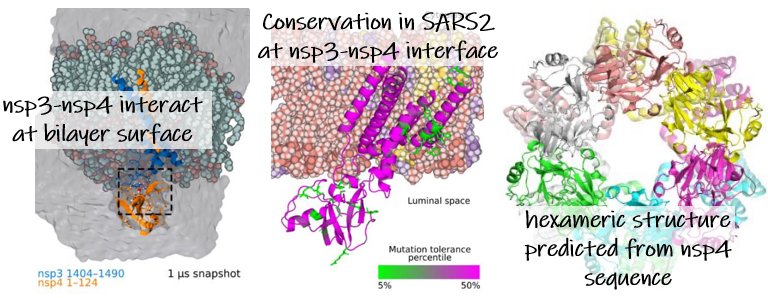Structure predictions contribute to understanding the SARS2 double-membrane vesicle pore
Work led by Liv Zimmermann and Petr Chlanda was recently published in Nature Communications: SARS-CoV-2 nsp3 and nsp4 are minimal constituents of a pore spanning replication organelle. The work used cryo-electron tomography to find that cells expressing only SARS2 non-structural proteins nsp3 and nsp4 produced hexameric pores decorating double-membrane vesicles (DMV). Previously, expression of IBV nsp4 alone was found to induce membrane pairing and nsp6 was considered to be a likely possible constituent of DMV pores in MHV- and SARS2-infected cells.

Our lab’s contribution to the paper incorporated results from our preprint that was the first report of the Predicted binding interface between coronavirus nsp3 and nsp4 which has yet to be confirmed experimentally, yet is consistent with a mutations known to disrupt nsp4 and sequence conservation during the SARS2 pandemic. Predicted structures and molecular dynamics helped interpret Cryo-ET data that lacked resolution in the DMV lumen compared to the hexameric nsp3 crown of the DMV pore.
